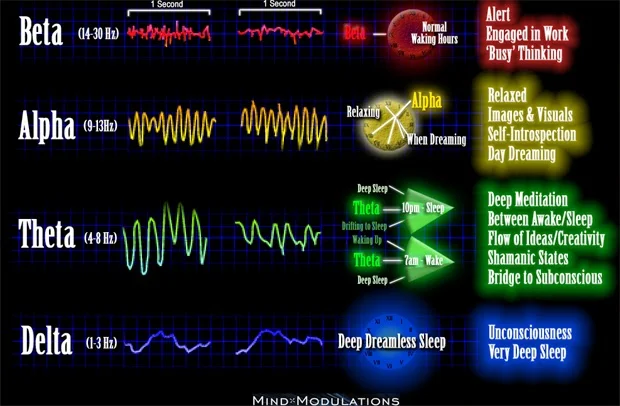“Anxiety, then faithless you'll be | Hope, just fall on me.”
I’m quoting that line from the song Fall
on Me by Moonstar88 to describe how I felt – anxiety to the point of depression
even. But I’ve discovered that music actually helps. Anyway, that’s nothing
new. Music had long been used for its therapeutic effect on various conditions.
You just have to know what specific music does help. This is where I learned
about brainwave entrainment.
 |
| Photo Credit: mazzastick.com |
Brainwave Entrainment
So what’s brainwave entrainment? I’ll
start by introducing binaural beats, isochronic tones, and delta brainwaves.
Binaural Beats
Binaural beats were discovered in 1839
by physicist Heinrich Wilhelm Dove. He discovered that by sending two signals
with different frequencies on both ears, the brain is able to detect and
resolve the difference and creates its own signal called a binaural beat which
is equivalent to the difference between those frequencies. An example would be
the brain creating a frequency of 5 Hz after hearing a 105 Hz and 100 Hz on
separate ears.
When a binaural beat is introduced to
the brain, it will resonate according to that beat. For example, after creating
a binaural beat at 10 Hz (an Alpha frequency) and introducing it to the brain, an
activity in the Alpha range is automatically induced as well. This is the same
technique used to guide the brain into any type of mental state.
 |
| Photo credit: catladymori.com |
Isochronic Tones
Isochronic tones on the other hand are
regular beats of a single tone that are used along with monoaural or binaural
beats.
Delta Brain Waves
Lastly, delta brain waves are those between the
frequencies of (0.5 to 4Hz) and are considered to be the most relaxing brainwave
frequency range. They are associated with deep sleep stages (3 and 4) and the unconscious
mind. Based on some research, introducing these frequencies for the listening
ear may promote different mental states.
Most of frequencies in this range (0.5 to 4Hz) have similar
effects which include relaxation, pain relief, reduce anxiety, induce sleep,
and inner sense of calm or peace.
 |
| Photo credit: tavernofdreams.com |
How it Helped Me
I started by looking up binaural beats or isochronic
tones for anxiety at YouTube. Most of the videos consist of just audio material
but some have videos. At the first track alone, I felt the effect within 10-20
minutes. I was ecstatic to have been relieved of anxiety. This brain wave stuff
does work, so I thought. So I tried searching for other tracks which help with
other issues. To my surprise, every single track seemed to have worked for what
they were intended for. I felt like a zombie being easily swayed by whatever
the music was created for when I looked for tracks for anxiety, depression,
anger, pain relief, memory, concentration, focus, creativity, alertness or
waking up, and so much more.
The list is endless that there were even videos that
appeared to be offering beyond what’s believable like anti-aging, healing,
lucid dreaming, money attraction, astral projection, sexual stimulation, attraction, and so much more. Although I can attest to the effectiveness of
these types of music to stimulate the brain towards certain moods, I can’t say
the same thing for other claims.
This powerful brainwave entrainment can become
possibly dangerous too when used for the wrong reasons. It can be used in the
same way as hypnosis is done. If you’ve seen the 2013 movie called Trance, the
heroine/villain was able to use her skills in hypnosis (which was initially
used for positive reasons like stopping gambling addiction) towards influencing
an ex-boyfriend to steal a valuable art work.
But nonetheless, there’s no harm in trying brainwave entrainment, delta brain waves, isochronic tones, and binaural beats for your
benefit.


Post a Comment